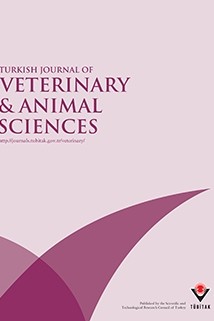
Turkish Journal of Veterinary and Animal Sciences
Yazarlar: Klibs N. GALVAO, Jose Eduardo P. SANTOS
Konular:-
DOI:10.3906/vet-1407-29
Anahtar Kelimeler:Immune function,Uterine pathogens,Uterine diseases,Dairy cows
Özet: Uterine diseases are highly prevalent in dairy cows. Causes of uterine diseases are multifactorial. There is good evidence for the susceptibility of the host and for the role of pathogenic bacteria, and less evidence for the effect of the environment. Uterine and leukocyte immune response is impaired early postpartum in cows that develop uterine disease. The decrease in immune function is associated with a decrease in calcium postpartum and an increase in NEFA and BHBA. Both endometrial cells and granulosal cells possess toll-like receptors (TLR) that can recognize and mount an inflammatory response to pathogen-associated molecular patterns (PAMPs) such as lipopolysaccharides (LPSs) or lipopeptides. Exposure to LPSs leads to endocrine dysregulation, which may affect steroidogenesis, ovulation and luteolysis. Some E. coli possess specific virulence factors such as fimH, hlyA, cdt, kpsMII, ibeA, and astA that cause uterine disease in dairy cows. These E. coli are associated with the occurrence of other pathogenic bacteria such as A. pyogenes, F. necrophorum, and Bacteroides spp., which act synergistically to cause uterine disease. The combined effect of bacterial infection and activation of inflammation is damage to the endometrium and embryo, delayed ovulation, shortened or extended luteal phase, and decreased fertility.